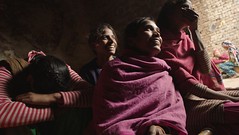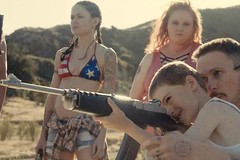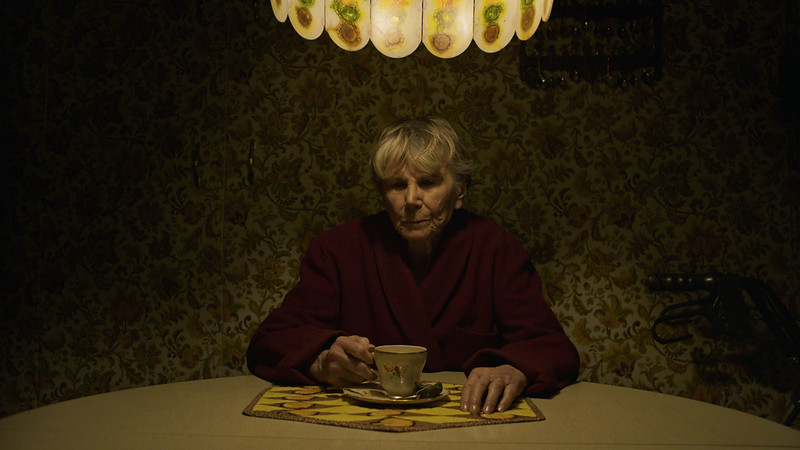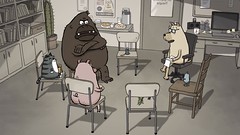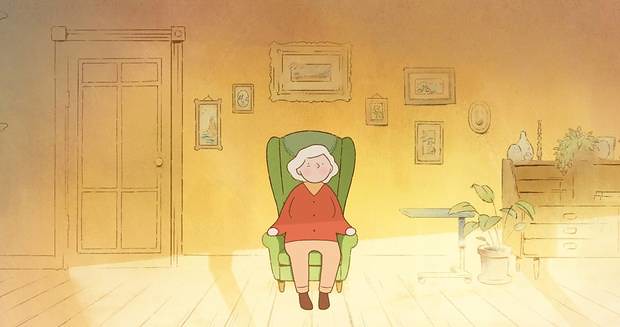SHARKWATER EXTINCTION
Directing: B
Writing: B
Cinematography: B+
Editing: B+
Spoiler alert! Rob Stewart, the Canadian conservationist, shark activist, writer and director of Sharkwater Extinction died during the making of this film, in Florida during an attempt to get footage of a rare species of shark. This might seem a strange thing to lead with, except that it’s a pretty useful thing to know before going in to see this film — and I did not. As a result, I spent a lot of time unfairly judging the movie, wondering why this guy seemed so self-involved. Is this about the sharks he’s trying to save or is it about him?
Then the point of his untimely death arrives in the narrative of the film and I was like, …Oh. Also, there’s a second thing particularly useful to know about Sharkwater Extinction: Stewart had already made a 2006 documentary called simply Sharkwater, to which this was always intended as a sequel. The footage in this film was shot in 2016 and 2017, early on featuring Stewart talking in Costa Rica about shooting “Sharkwater 2.” I had never heard of the initial documentary, but judging by what’s presented here, watching only this film is likely just as effective whether you’ve seen the first film or not.
Curiously, even though obviously Sharkwater Extinction would have had to be finished up by someone else, Rob Stewart still receives sole credit as director and writer. It seems apropos to mention the editor, Nick Hector, who has a long resume of having edited documentary films and television shows as far back as 1986. At a lean 88 minutes, indeed this film is very well edited; with a team of five different videographers, it also features some fantastic underwater footage of wild sharks.
I just found myself wondering, naively, why there was also so much footage of Stewart himself. This film sure makes it clear how fit and healthy he was, much of his time onscreen spent shirtless, sometimes appropriately (he was a diver, after all), sometimes seemingly unnecessarily. I still find myself somewhat cynically suspecting he had a thing for being the center of attention. That said, were he still alive, perhaps he would not have made the choice himself to feature exclusively footage of himself swimming underwater — no sharks — before the title card came onscreen.
It’s admittedly an interesting experience to discover the narrator of the story was dead all along, when the film is a documentary. Stewart was clearly passionate about the issues at stake here — namely, the near-eradication of the planet’s millennia-old apex predators in a matter of decades. As I watched each chapter unfold with Stewart and his crews traveling from Florida to Central America to Africa to Southern California, working to expose illegal fishing practices the world over, I wondered about the efficacy of combining his methods with film making.
The methods themselves, to be fair, do seem to make a difference — albeit to varying degrees: part of the point here is that his work focused on in the original Sharkwater helped make shark finning for shark fin soup illegal in most countries around the world, and yet the industry continues to boom due to criminals and massive legal loopholes. In one shot, we see a live shark’s fins get cut off before the shark is tossed back into the water to die. This is, of course, heartbreaking — and it’s a relief not a huge amount of such actions are seen live onscreen. Stewart later gets footage of sharks caught in drift nets near Catalina Island in California, which helps get the practice banned in that state.
The utility of Sharkwater Extinction as a film, when it comes to shark activism specifically, is a bit more of a mixed bag. This film will never see a huge audience, and many of those who do see it will fancy themselves making a difference by doing no more than simply seeing it. The film does serve well as a tribute to Rob Stewart’s unarguably important legacy, which no doubt is a comfort to the loved ones he leaves behind. With that in mind, it might have been useful to make it clearer earlier on that this was as much about him as it was about shark conservation.
I mean, sure, both hammerhead sharks and the film’s director were beautiful creatures, we get it!
Overall: B








